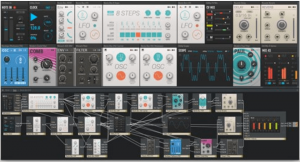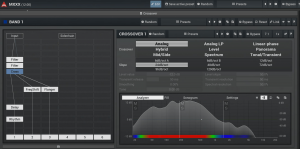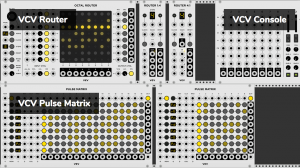How To Reinvent Your Sound
If you’re finding that all your tracks are starting to sound too similar, there are a number of ways you can reinvent your sound. A while back, I wrote an article about how sometimes we feel that our music always ends up sounding the same. I did a test with friends and asked them to import their last 10 tracks into Ableton Live to compare each of the tracks’ wave forms. Visually, this immediately reveals if their track structures are the same. For instance, some people always introduce the hi-hats after 4 bars and will pause the kick just before. Others will put a first break after 2 minutes, then another one pretty much at the same place every time. We have habits and preferences in music; it’s possible to end up going down the same road with each track.
If you take music production seriously, you’ll want to pay extra attention to how you present your art. If you always stick with the same routines and habits, you might have difficulty keeping things interesting, especially if multiple labels want to work with you. Let’s discuss a few important points improve your sound, without losing the sound signature you might have already developed.
Know yourself first
You can’t change or reinvent yourself if you aren’t aware of your routines. What do you want to change or upgrade in your sound? Sometimes you know easily, but other times it’s important to answer this question. There are two major ways you can answer this question, but first you’ll need to gather all the tracks you’ve made in the last months and listen to them (or have a friend listen to them which can be better as there will be no bias) to determine what commonalities they share.
Another way, which is what I do, is to open your last bunch of project files and look at the arrangements. There will be something you might be doing regularly that needs to change. Once you know, the best thing to do is to start taking notes in the project itself by putting markers where you tend to do a specific thing. Put as many markers as possible then delete the content and make that new project your starting template for your future projects.
Are you always using the same kick? The same samples? The same synth? Reverb? If you’re always using the main effects that are included in your DAW, don’t forget that thousands of other people are also using those effects, and perhaps it’s time for an upgrade to new VSTs. Some are very affordable too. What’s very interesting is how sometimes we don’t realize we use the same samples. If you use analog gear, this might end up becoming an issue unless you add a bit of color or personality to your sounds somehow. Machines are often limited to what they can do and will depend on outside help.
For instance, if you always use the same type of kick or clap, perhaps you can start layering it with something else.
TIP: This is the longest part of the process but it will pay off – use friends to collect intensive feedback or our Facebook group.
Seek inspiration
This is the fun part and it demands a bit of an open mind. I would encourage you to do these things:
- Who are your main inspirations in music? which artists do you like? Try to find out what/who inspire them. Perhaps it’s an unknown artist or something completely different. For instance, Bruno Pronsato is an ex-rock drummer and that has been a big influence on him. Pretty often you’ll find that some artists do get inspiration very different from the type of music they themselves make.
- Try to listen to randomly selected music. This can be from the radio that you swipe around or from Spotify. There’s also a plugin VST named Radio that is pretty cool for that. It allows you to stream the radio directly in your DAW, and record it – an endless source of ideas. It also offers random channels to listen to.
- Go back to oldies. If you lack ideas, try exploring different eras such as the 80s, 70s, etc. You can also dive in the vast world of jazz, hip hop, folk, world music, or indie rock to name a few. Create yourself a playlist and note down some ideas you like and see in them.
The most important question to ask when you listen to other music is to ask yourself what made that song famous. Is it the quality of the voice of the singer? Some innovating technique? Some use of effect? Every song has a story and it can be very insightful to understand what it is.
TIP: If you lack ideas, dive into electro-acoustics, Musique Concrète or Free Jazz. It’s not for the faint of heart but it’s full of ground-breaking ideas.
Think Modular

Reaktor by Native Instruments
I don’t mean modular synths here – when I say “think modular“, I mean that it’s time to become a crafting master in Ableton. Here are a few tool suggestions that can help you improve:
- Reaktor. Reaktor is a monster. If you’re not already into it, check out Native Instruments’ demo to try it. It will be intimidating at first but it pays off, creatively speaking. There’s a huge community exchanging patches made with it and the blocks series is a good alternative and introduction to modular synths. The cool part is finding free tools that can be tied together and rebuilt into an instruments of your own. Many artists like to build one patch which becomes the tool in their next 5-10 tracks, then it evolves into something else. The strength of Reaktor is that it can be used as a synth or as effects.
- MXXX.

MXXX By Melda Production
MXXX is for effects. It is very, very powerful as you can create complex chain of effects into one space, then automate multiple at once. I’m pretty addicted to this tool for sound design but also for mixing where I can fix some issues.
- Reason. Reason (a DAW) has a more visual approach and sounds incredibly amazing. There’s something very playful about it by plunging virtual cables in the UI. The last version is simply outstanding and won awards in 2017. Link it to Ableton to combine forces. Ableton can send notes to Reason and you rewire the sound back into your project.
- Bitwig. I find this DAW is very advanced and if you’re new to music production, it will be a challenge to learn. Since it’s very similar to Ableton, the transition is pretty fluid. I find the way the plugins work together is extremely creative and easy, without killing CPU. You can add randomizers and LFOs to pretty much anything and for that alone, it’s worth using. I often come to Bitwig for advanced sound design.
- Goodheartz. Goodheartz is a collection of super nice plugins. There are many modular options but I like these because of their high quality and the fact that they don’t push CPU too hard.
- Modular by Softubes. This plugin is the most impressive take on real modular synths out there. You have software equivalent of real hardware, a bit like Universal Audio’s version of hardware mixing tools.
- VCV.

VCV Rack (credit: VCV website)
VCV is all the new hype – a free, open source environment and also an interpretation of hardware components. It does have a learning curve but the results are fun and it will certainly get you out of your comfort zone.
TIP: Abuse demos and trials! Try everything, record all your sessions and use them as wave files in a project. The plugins that are the most exciting should be considered to be added to your shopping list.
Collaborate
Collaboration is the most important in order to help you break from your habits. If you can find someone who lives close by that you can visit to produce in someone’s studio, hang out, listen to music and talk production, it will bring you a lot of fresh ideas. Don’t limit yourself to people who make the same music as you. It can be a guitar player or a singer. Sometimes if you can try to work on a new song with someone else, it will work your creative mind and force it to explore techniques you might have never been exposed to. Collaborating online is also very refreshing. Find people on Soundcloud and see if you can befriend them to eventually work with them, or remix them. It can be someone in a field that is totally out of your “normal”.
SEE ALSO : Where to Get Fresh New Ideas for Tracks




Trackbacks & Pingbacks
[…] The enduring legacy of tube drums isn’t limited to mere imitation; it’s a catalyst for innovation. These instruments weren’t just artifacts of an era; they were embodiments of the spirit of pushing boundaries. Musicians and producers, inspired by the pioneering sounds of the 80s, sought to capture that same audacious essence. The result? A constant drive to marry retro nostalgia with contemporary experimentation. The influence of tube drums isn’t static; it’s a spark that ignites the flames of creativity, prompting artists to reimagine sounds, reshape melodies, and reinvent music production techniques. […]
Leave a Reply
Want to join the discussion?Feel free to contribute!